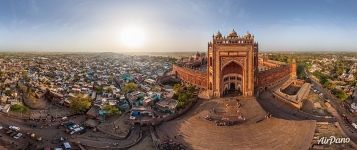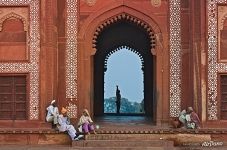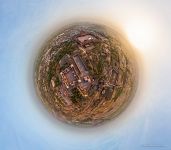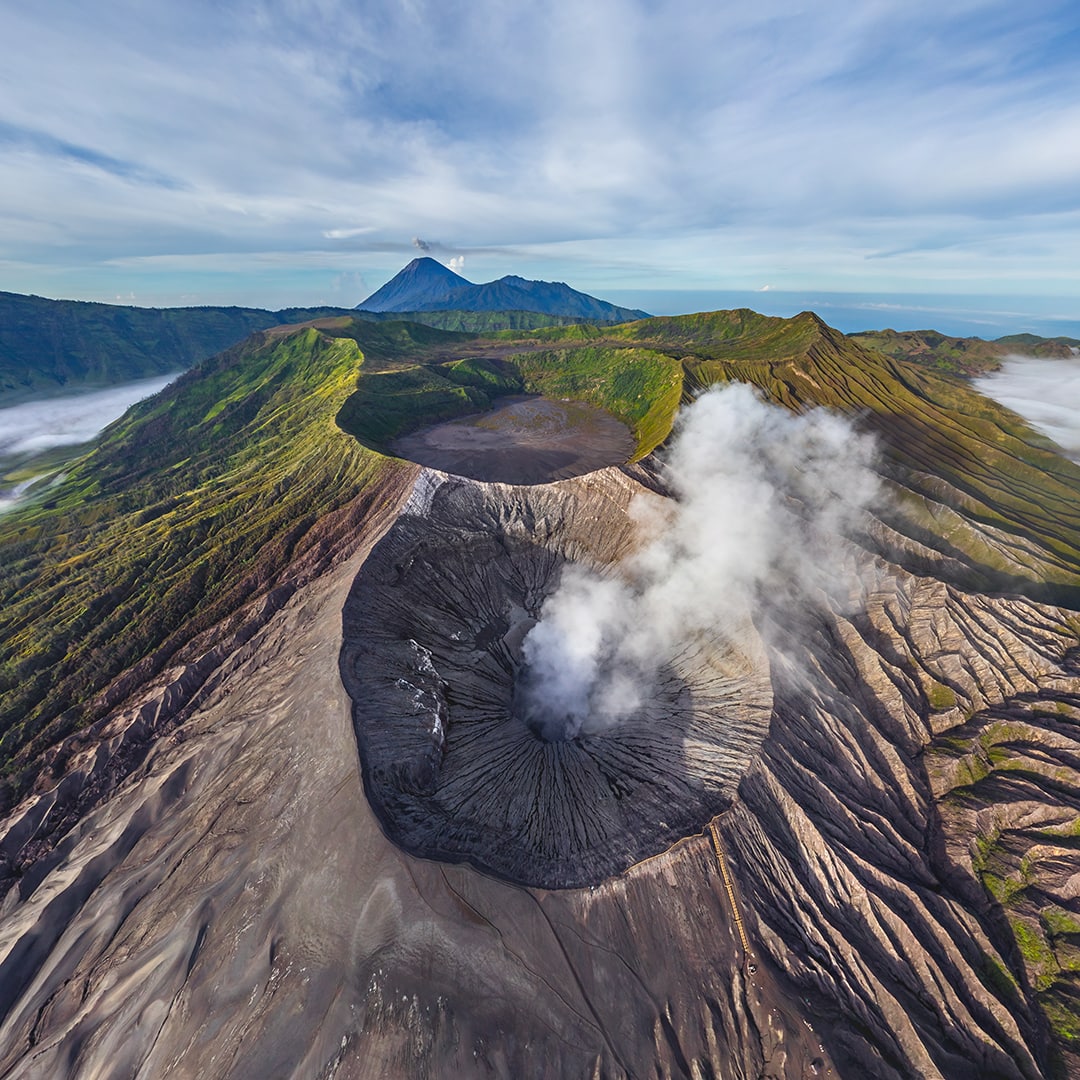Fatehpur Sikri, Agra, India
Having appeared in the 16th century, the Mughal Empire had been trying to assert itself in the Southern Asia for more than 200 years. Huge territories were the object of great fights: first they were occupied, then in some period of time they were given to the enemies again. In between 1571 and 1585 Fatehpur-Sikri served as the main city of the Mughal Empire. Its name can be translated as the "City of Victory". That was the name given by its founder — the third padishah, a descendant of Genghis Khan, the great grandson of Tamerlane — Akbar the Great.

He was given this title according to his deserts: during his reign the might of the Empire was strengthened and the territory of the state was widened. The creation of a new capital was initiated in 1569. The one of the aims of the new city was to represent the triumph and grandeur of the Empire, so Akbar the Great hired the most famous masters, who managed to create the genuine pieces of art.
Nowadays Fatehpur-Sikri is a part of Uttar-Pradesh, the state located in the northern India. The city is one of the very few well preserved examples of the Mughal architecture. It is characterised by the mixture of different local, Persian and Indian styles, which resulted in creation of the very refined buildings. Special attention was devoted to the symmetry and equilibrium of the different sections of houses, as well as the most sophisticated details of the decoration. The most famous example of this style is Taj-Mahal and Red Fort in Delhi, but Fatehpur-Sikri is not of the less interest.

The residential district of the city is called Dualat-Khan — the "Residence of Destiny". This is the place where pavilions for state and private audiences, a playing field, a treasure house and different palaces, including absolutely incredible Panch-Mahal (the "Wind Catcher"), are situated. The wind blows through the storeys standing on 176 elegantly carved columns. The area of the every next storey is decreasing; the upper level is crowned with a dome. A square pond called Anoop-Talao with a small island inside and bridges can be found nearby. Together with the "Wind Catcher" it was the place for recreation and leisure for the Emperor and his family.

Not far from the palace is another pavilion. It is considered to have been one of the first female schools in India, where court women could study grammar and maths.
All the wives of Akbar the Great were supposed to have their personal mansions, each of them is a masterpiece. Buildings were decorated with the exquisite ornament, refined columns, frescos, balconies and domes; the palace of the Emperor's mother was decorated with gold.

Another part of the city served for religious purposes, it was the area of mosques and mausoleums. A private entrance was created special for Akbar the Great, it got the name Badshahi-Darwaza — the "Gate of Padishah". It is decorated with stylised pomegranates, the top of each arch is crowned with buds of lotuses. The other entrance into the sacred complex is available through the 54-meters high gate decorated with plenty of domes; it is called the "Great Gate" Buland-Darwaza.

All this is just a small part of what you can admire in Fatehpur-Sikri. The whole citadel is full with outstanding monuments, which managed to remain intact till nowadays because no one used them. The fact is that the city had been inhabited only for 16 years: in 1585 it was abandoned due to the paucity of water. The adversaries of Akbar the Great supposed that the Gods punished the Emperor for being ambitious and obstinate. In any case, the ‘dehydrated' city was abandoned by both aristocracy and ordinary people.
The wind became the true master of the capital; the territory of the deserted city overgrew with thistle and liana. It was a home for panthers, jaguars, griffons and snakes; people tended to avoid this place. But in the end of the 19th century restorers entered the city and began working. But not much amount of work was needed: the city has remained almost intact under the thick vegetation.

In 1986 Fahtepur-Sikri was inscribed by UNESCO as a World Heritage Site. Since then the city has been attracting many tourists. In case you don't have an opportunity to travel there, then you can enjoy the virtual walk around this place and admire the masterpieces of Mughal architecture, which you can behold in its initial form.
Photos by Stas Sedov and Dmitry Moiseenko
19 May 2016
Read more
Photogallery Above the Jama Masjid. Planet
Above the Jama Masjid. Planet
 Silhouettes of the mosque
Silhouettes of the mosque
 Buland Darwaza (Gate of Magnificence). Panorama
Buland Darwaza (Gate of Magnificence). Panorama
 Tomb of Sheikh Salim Chishti
Tomb of Sheikh Salim Chishti
 Interiors
Interiors
 Palace Complex, Northern Palace of the Haramsara (Birbal’s House)
Palace Complex, Northern Palace of the Haramsara (Birbal’s House)
 Planet of Fatehpur
Planet of Fatehpur
 Entrance
Entrance
 Buland Darwaza (Gate of Magnificence)
Buland Darwaza (Gate of Magnificence)
 Surroundings of the Fatehpur Sikri
Surroundings of the Fatehpur Sikri
 Fatehpur Sikri. Planet
Fatehpur Sikri. Planet
 Fatehpur Sikri
Fatehpur Sikri

















